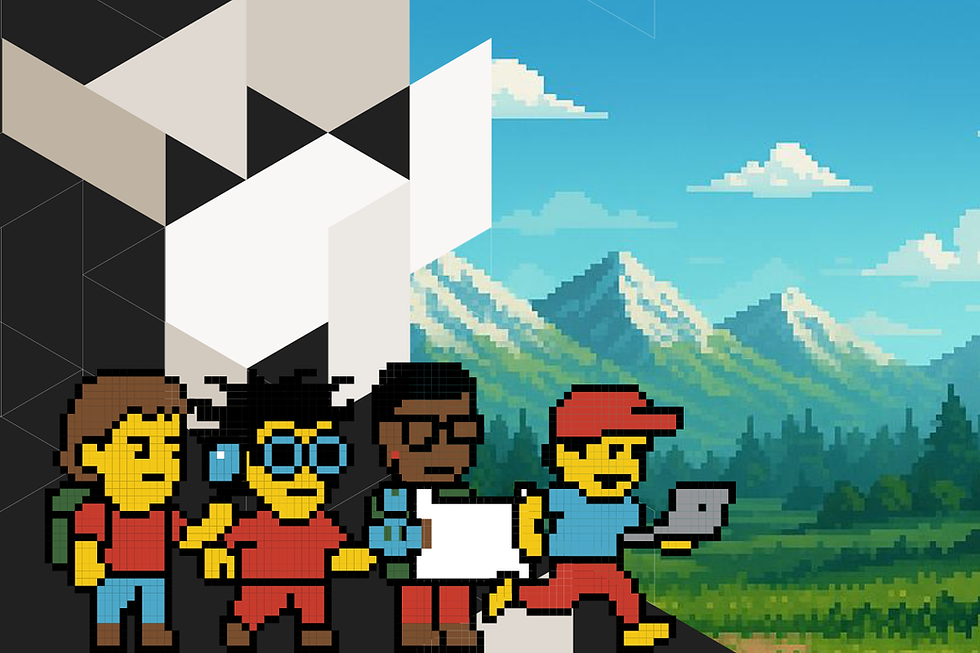How This Dev’s Passion Project Accelerates Automation at His Day Job
- Jade Mitchell
- Sep 2
- 4 min read
Jade Mitchell, Senior Copywriter
TL;DR:
Discover how Salesforce developer Nahuel Moreno built Deploforce, an AI-powered automation tool, inspired by his learning journey and the quest for ultimate workstream efficiency.

There’s something quietly heroic about the side project. It’s what we do when no one’s watching, a private workshop, where experiments either fall apart or find flight. For Nahuel Moreno, it was this tinkering after hours that led to Deploforce: a brand-new automation tool built for Salesforce developers and admins who want to simplify Flows and get more done in less time. Powered by AI and born out of personal necessity, Deploforce is already earning user love just a few months into launch.
From Side Projects to Automation Specialization
Nahuel’s journey began with basic web development, HTML, CSS, JavaScript, and React. While independently building up his skillset, he found a steady gig as a Salesforce developer through a partner company. It was a good fit. Salesforce offered him the chance to streamline processes, help teams save time, and build things that made work smoother. But even as he settled into the 9-to-5, Nahuel kept the late nights alive with side projects: an AI Pinterest automation here, a backlink acquisition tool there.
Those projects weren’t just creative detours. They were training grounds. They helped him level up technically, explore new markets, and learn the tools of the growth trade. Most of all, they sharpened his instinct for what made a product useful: simplicity, automation, and a little AI magic.
The Drive Behind Deploforce
The idea for Deploforce was less lightbulb, more slow-burn. Nahuel had been working on a backlink acquisition tool, but realized quickly that the SEO field was too competitive. His real strength was Salesforce, and that’s where he focused: on the ability to package and deploy Salesforce components as bundles, enhanced with AI support.
He identified common challenges amongst his Salesforce peers, namely:
Constantly switching between Salesforce docs, Stack Exchange, blogs, and community resources to find solutions.
Toggling between multiple environments to switch onctext consuming an inordinate amount of production time.
Repetitive, uninteresting tasks like writing boilerplate code, creating test classes, and managing deployments
Understanding how changes to one component affect others throughout the system through metadata relationships
Working within strict execution boundaries unique to the Salesforce platform
The complexity of implementing proper sharing rules, permissions, and access controls in security models.
Around the same time, Anthropic’s Claude model had just released a web search API, and Nahuel saw further opportunity. Why not combine Claude’s real-time search capabilities with Salesforce’s packaging framework? If the AI got stuck, it could search the web and return cleaner, more reliable code. The vision: an intelligent deploy assistant that thinks like a dev and works like an enthusiastic robot intern.
Building Deploforce while juggling a full-time job was no small feat. Nahuel worked solo, spending late nights and spare weekends on his tool. His goal was utility, not perfection. He built what he needed, tested it, and shipped fast. Of course, there were challenges. Salesforce version mismatches meant components had to be built in the right org version or risk deployment failure. But he powered through. Early feedback from users rolled in and, to Nahuel’s delight, it was glowing.
“After 8 years of Salesforce development, I can confidently say Deploforce is the tool I've been waiting for to deal with the slow setup.” Thomas Wright, Salesforce Administrator
Those initial testimonials weren’t just ego boosts. They were early signs of proof that others wanted what he wanted: a tool to automate workflows and clear the clutter from their dev lives.
Finding Users by Being Scrappy, Smart, and SEO-Savvy
As a developer himself, Nahuel has no patience for fluff. When he goes tool-hunting, he starts with Reddit, scanning for honest reviews. He talks to Claude, his favorite AI model, asking for assessments. He avoids anything without a free trial. And if a tool isn’t recognized by his AI assistant, that’s a big red flag, he knows how much easier it is to build when your tools are AI-compatible.
What else matters? Community. A changelog that’s actually updated. Clear documentation. Tools that make themselves easy to find and easy to love.
This explains why Nahuel’s user acquisition strategy is refreshingly no-frills. His two main channels? Cold emails to target prospects and rock-solid SEO. The cold email game meant diving headfirst into infrastructure and copywriting best practices, learning how to not just write an email, but get it opened, read, and clicked. For SEO, Nahuel brought experience from past projects into play, building programmatic content that drives consistent traffic.
It’s a modest setup, but it’s working. And more importantly, it’s teaching Nahuel what resonates with his target users.
Next Steps
The roadmap for Deploforce is ambitious but grounded. Nahuel is planning to bring Claude integration deeper into the platform for even smoother Salesforce component retrieval. He’s also working on a debugging tool where users can paste an error message and let the AI do the investigating.
But more than features, it’s about philosophy. Nahuel isn’t trying to build the flashiest tool. He’s building the one he wants to use every day—and that, it turns out, is a solid bet.
Deploforce wasn’t born in a boardroom. It started in Nahuel’s after-hours, carved from curiosity and a real need. Today, it’s helping others save time, code better, and deploy smarter. Not bad for a solo project.
For anyone thinking about building something new: pay attention to your daily pain points. The best startup ideas don’t always arrive with a splash. Sometimes, they creep in during your side hustle hours, waiting to be noticed. Just ask Nahuel.



